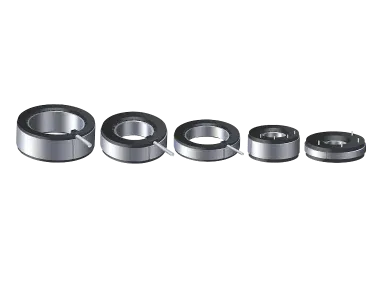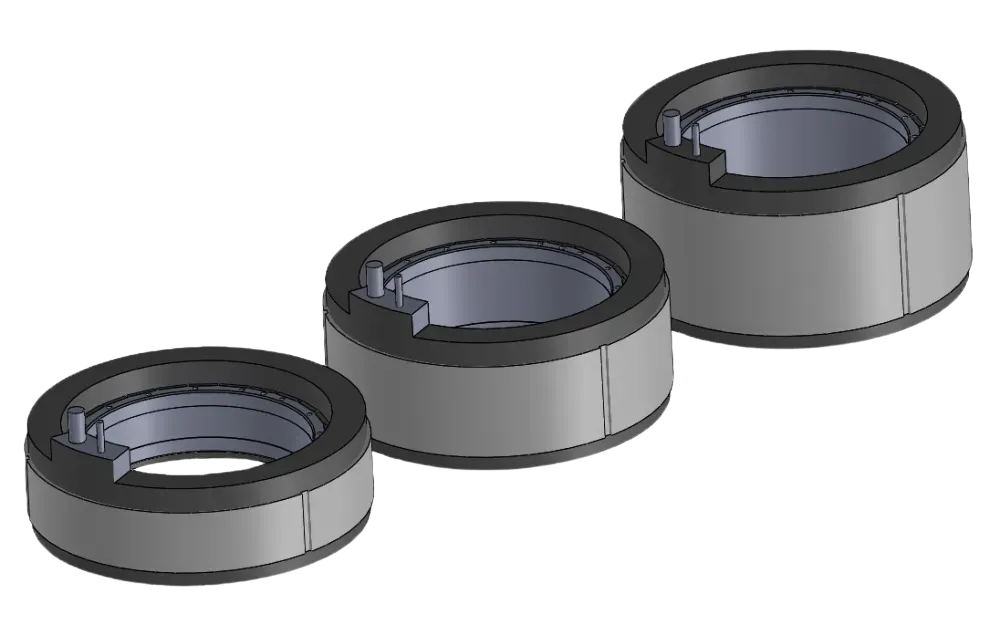Torque in motors is the driving force behind motion. It determines how machines start, stop, lift, and accelerate across industries from robotics to electric vehicles. This guide breaks down what is torque in motor systems, key types, formulas, and how torque powers real-world applications.
What Is Torque in Motors?
Torque in motors refers to the rotational force produced by the motor’s shaft. In simple terms, it’s how much twisting power the motor can apply to move a load. The greater the torque, the more force the motor can exert to initiate or sustain rotation even under demanding conditions.
This concept is central to countless applications from conveyor belts in factories to robotic arms in automation systems and electric vehicles. If your motor can’t produce enough torque, your system will stall, struggle, or simply fail.
The Relationship Between Torque, Force, and Rotational Motion
Torque is essentially the rotational equivalent of linear force. While force pushes or pulls in a straight line, torque twists. Mathematically, torque is calculated as:
Torque = Force × Radius
This means the farther the force is applied from the axis of rotation, the greater the torque. That’s why a longer wrench loosens bolts more easily, more leverage = more torque.
In motors, torque determines how effectively the motor can rotate a load, especially against resistance like inertia, friction, or gravity. It’s what powers real motion, not just spin.
Common Units of Motor Torque
Motor torque is typically measured in:
- Newton-meters (Nm) – the international SI unit
- Pound-feet (lb-ft) – common in the U.S. market
- Smaller precision motors may also use oz-in (ounce-inches)
Choosing the right torque unit ensures consistency in calculations and performance expectations.

Why Torque Matters in Electromechanical Systems
Here’s why torque in motors is the difference between system failure and performance excellence:
- Start-Stop Performance: High starting torque is critical for machines that must overcome inertia immediately like elevators or crushers.
- Load Handling: Without adequate motor torque, even the most advanced motor won’t be able to move its load effectively.
- Speed Control & Efficiency: The torque-speed relationship affects how your motor behaves under different loads. Too little torque at low speed? You get slippage and wasted energy.
- Peak Torque of Motor: The peak torque defines how much temporary force your motor can handle before overheating or shutting down. It’s crucial in dynamic applications with load fluctuations.
- System Reliability: Torque defines durability under load, precision in control, and resistance to stalling, especially in robotics and automated systems.
Key Types of Torque in Motors
Whether you’re selecting a torque motor for high-precision machinery or optimizing performance in a robotic system, mastering these torque types is non-negotiable.
1. Starting Torque – Power That Gets You Moving
Starting torque is the initial torque a motor generates from a complete stop. It’s the brute force that overcomes inertia and sets heavy loads into motion. This torque plays a decisive role when motors are required to launch under full load conditions.
- Crucial in high-load startup applications like press machines, elevators, conveyors, and industrial compressors
- Determines whether a motor can start without stalling or overheating
- Indicates the minimum torque needed to initiate rotation
Without sufficient starting torque, your system may fail to start or damage components. Choosing a motor with the right motor torque formula for starting conditions is the first step toward reliability.
2. Running Torque – The Force of Consistency
Once the motor is in motion, running torque also called continuous torque takes the lead. It’s the torque required to keep the motor running at a constant speed under load.
- Defines how efficiently a motor can handle operational tasks in the long term
- Ensures smooth performance in automation lines, packaging systems, and assembly robots
- Directly impacts energy usage and mechanical wear over time
In most cases, motor torque during steady-state operation is much lower than at startup—but no less critical. Misjudging running torque means risking inefficiency or motor failure.

3. Stall Torque – The Breaking Point
Stall torque is the maximum torque a motor can generate when its shaft is locked and not rotating. It’s the absolute threshold of force before damage or system failure occurs.
- Found in high-risk scenarios where the motor stops moving but current keeps flowing
- Often used to benchmark motor strength but never meant to be sustained
- Crucial in servo systems, robotic joints, and load-testing environments
Torque in motors reaches a dangerous peak at stall. Selecting a motor based solely on stall torque without proper thermal protection can destroy your investment. You must design with this in mind not operate at its edge.
4. Peak Torque – Surging with Purpose
Peak torque refers to the maximum torque a motor can deliver for a short duration without compromising integrity. It’s your emergency reserve used when systems encounter brief, intense resistance.
- Common in applications with cyclical or variable loads, such as pick-and-place robotics, injection molding, or servo motion sequences
- Helps accommodate real-world spikes without system shutdowns
- Requires careful thermal consideration to avoid overheating
Peak torque of motor selection is a balancing act: too low, and you’ll experience stalls; too high, and you risk overspending or overengineering.
Motor Torque – Operation, Calculation and Optimization
How Torque Functions in Motor Operation
Torque is the heartbeat of motor performance without it, no load moves, no rotation starts, and no system delivers output. When asking what is torque in motor systems, we’re really talking about the motor’s ability to exert rotational force. And that force determines everything: from how quickly a conveyor starts, to how precisely a robotic arm positions itself.
Here’s what you need to know:
- Torque, Speed, and Load Are Inseparable
Torque is the rotational force that motors use to move loads. But torque doesn’t work in isolation; it directly impacts and is influenced by the speed of rotation (RPM) and the system’s resistance or load.
The heavier the load, the more motor torque is needed to overcome inertia and start motion.
- Maintaining Speed Under Load Requires Consistent Torque
Once a load is moving, the motor must continue delivering sufficient torque to maintain constant speed. If torque drops and load remains high, performance dips or the system stalls. This is especially critical in high-precision applications like CNC machines or automated assembly lines.
- Power and Torque Are Interlinked
Understanding the motor torque formula is essential to engineering success. Here’s the fundamental relationship:
Power = (Torque × RPM) / Constant
In SI units, that constant is usually 9.5488 when converting between Nm and kW.
This formula shows that at a given power, increasing torque lowers RPM and vice versa. That’s why torque-speed trade-offs are a key part of design optimization.
- The Magnetic Source of Torque
In DC motors, torque is directly proportional to armature current:
Torque ∝ Current
This makes torque easy to control via current regulation perfect for applications needing real-time torque control, like electric vehicles.
In AC motors, the interaction between the rotating magnetic field and the stator current creates torque. Advanced motor design optimizes the flux path to deliver maximum torque in motors with minimal energy loss.
- Torque-Speed Curve = Your Performance Roadmap
Every motor has a Torque-Speed Curve that shows how torque varies with speed:
-
- High torque at low speed: Ideal for starting heavy loads.
- Torque drops at high speed: Typical for standard induction motors.
- For torque motors, the curve is engineered to provide consistent torque across a wide speed range ideal for positioning systems.
- Peak Torque Defines Your Limits
Don’t confuse continuous torque with peak torque of the motor. Peak torque is the highest torque the motor can deliver in short bursts, often during acceleration. Choose a motor that handles your application’s peak torque demands, or risk overheating and failure.

How to Calculate and Optimize Torque
You can’t control what you can’t measure and when it comes to torque, precision matters. Calculating and optimizing motor torque is your gateway to reliable performance, longer lifespan, and reduced energy costs.
Basic Motor Torque Formulas
Start with the fundamentals:
- Linear Torque Formula
Torque = Force × Radius (T = F × r)
This gives you torque in Newton-meters (Nm) when applying a force at a given radius.
- Rotational Power-to-Torque Formula
Torque = (Power × 60) / (2π × RPM)
This equation lets you compute torque based on the motor’s power output and rotational speed. Whether you’re evaluating startup torque or peak torque, this formula is indispensable.
Strategies to improve Torque in Motor design
- Increase input current or voltage: for torque motors and dc motors, this is the fastest way to raise torque.
- Modify rotor diameter or coil turns: a larger rotor or more wire turns increase the magnetic leverage, resulting in higher torque without compromising efficiency.
- Integrate the right gearbox or transmission system: a gearbox multiplies torque while reducing speed. perfect when high load, low speed is required.
- Select a motor with the right power rating and torque profile: Don’t overspend on overpowered motors. Choose one whose peak torque and continuous torque align with your load profile. Consider torque motor solutions for high-precision, high-torque applications such as cnc, robotics, or actuators.

Applications of Torque in Real-World Motor Systems
Industrial Machinery
Heavy-duty industrial systems demand relentless, high-performance torque to operate efficiently under extreme loads and conditions.
- Conveyor systems rely on motor torque to transport heavy materials without stalling. A miscalculation in torque can mean downtime, system damage, or worse product failure.
- Press machines use immense torque during forming, cutting, or shaping. Peak torque of the motor during the pressing cycle determines the system’s ability to maintain integrity.
- Heavy-duty robotic arms in manufacturing require precise and durable torque delivery to lift, position, and manipulate high-weight components with accuracy.
Electric Vehicles (EVs)
Torque defines how an EV feels on the road. It’s not just power it’s that instant push you feel when pressing the accelerator.
- Acceleration performance in EVs is directly tied to available torque. The faster and smoother the torque delivery, the better the driving experience.
- Hill-climbing capabilities depend on the torque output at low speeds. High peak torque ensures that the vehicle doesn’t lose momentum under stress.
- Compared to internal combustion engines (ICE), electric motors deliver instant torque, creating a more responsive and engaging drive.
Applications of Torque in Real-World Motor Systems
Home Appliances
In the world of home appliances, torque isn’t loud but it’s essential. Efficiency, noise reduction, and longevity are all tied to motor torque.
- Washing machines need torque to handle variable load weights during different washing cycles. Smooth torque delivery reduces mechanical stress.
- Juicers and grinders require sudden bursts of peak torque to break down hard materials without jamming or overheating.
- Ceiling fans and HVAC systems rely on consistent torque to operate quietly and at optimized speeds for long durations.
Automation & Robotics
In precision systems, torque is the heartbeat of control. When accuracy is critical, torque in motors becomes the differentiator between smooth execution and mechanical error.
- Robotic arms must produce calculated torque for joint movement. Over-torque leads to errors; under-torque leads to instability.
- CNC machines and rotary axes depend on torque-controlled spindles to ensure high-speed cuts without vibration or distortion.
- Torque motor selection in automation systems is key for stability, responsiveness, and accuracy.
Conclusion
Understanding torque in motors is not just about physics it’s about control, power, and performance. From calculating the right motor torque formula to optimizing peak torque for demanding applications, torque is the heartbeat of motion. Whether you’re designing electric vehicles or precision robotics, mastering torque gives you the edge to build systems that move smarter, faster, and stronger.

